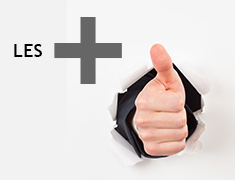
Integrative projects (or case studies) let Undergraduate students practice their academic fundamentals. (The next-future? engineers are involved in all steps of project management and problem-solving in Mechanical Engineering.
They allow students to question, innovate and further challenge their thoughts.
Our strengths
 The next engineers are involved in all areas of project management and problem solving in mechanical engineering:
The next engineers are involved in all areas of project management and problem solving in mechanical engineering:
research, analysis and documentation, reports, management and meetings, implementation and deadlines, team management, collaboration with industry and presentation to a committee.
- They allow students to question, innovate and further challenge their thoughts.
- Furthermore, we offer coaching with no compromise on their autonomy and freedom.
In the past, many of these projects demonstrated transdiscplinarity and multi-disciplinarity, responding to the needs of both the customer and society
| Two teams | One cart |
| The vehicle presented here is powered exclusively by renewable energies. Animals can pull it, and its roof includes solar panels. The second team had to develop the concept and prove its feasibility. Market research and economic analysis were done. Mechanical features have been validated by finite element strength analysis. Power consumption and energy production have been characterized using a Matlab / Simulink custom built simulation code. |
| Features and benefits | The cart allows users to |
|
| To be continued |
|
A complete review of profitability for the client and for future customers has been done and demonstrates the feasibility of the project. News from Sénégal:
|
| Partnership |
| Client |
|
| Bike of the 21st century |
| This multidisciplinary project carried out by Graduate students in Industrial design, Engineering and Business, demonstrated the commercial feasibility of this product and proposed target markets. The project in figures: 17 students, runtime: 8 months, work involved: 6000 hours. Subsequently, the first virtual concept-bike in three dimensions was developed using Catia software. |
| From Polytechnique Montréal to the customers |
| Finally, this primary work was used by the company Lito Green Motion, and experienced industrial designers, to finally develop the commercial version of the product, currently available on the market. |
| To be continued |
|
News and media:
|
| Partnership |
| Client |

| Oxous |
| In this project, the team is made up of students from Polytechnique Montréal, Université de Montréal’s School of Industrial Design and HEC Montréal. They had to design a new light, modular, high-performance and energy-efficient all-terrain utility vehicle that meets the needs of farm workers. User and task-centered, the project used a global design vision. Many constraints were involved, related to time, technical development, budget, legislative standards, and suppliers. This feasibility study supported the Decelles Industries business plan to prepare the commercial development and eventually the market launch. |
| Features and benefits | The vehicle allows users to |
|
| To be continued |
| Students demonstrated the technical feasibility of the project but this initial attempt also demonstrated that more work is required to optimize the product and reach the desired manufacturing cost requirements. |
| Partnership |
| Client |
|

The Association des designers industriels du Québec and Centre Québécois de Recherche et de Développement de l’Aluminium have highlighted this project
| The monorail project |
| Twenty students from Polytechnique Montréal, HEC Montréal, the Université de Montréal’s School of Industrial Design, have presented that solution: a new electric public transit monorail system. The monorail would link the Bonaventure station (in Montréal) and Chevrier (Montréal’s South Shore). Students were involved in many steps: the project’s financial and commercial feasibility, security requirements, social and actual transport environment. |
| Meet the city's needs |
| Their goal was to meet the needs of public transportation users in Montréal. The monorail will transport approximately 70,000 passengers per day during the week. With the SAFEGE system, the monorail runs with the most common system for suspended monorails throughout the world. For the upcoming months, their work will focus on public demand and interest, an economic analysis, product production and marketing plan. |
| Partnership |

| The public transportation project |
| Bombardier Transport Amérique du Nord and students have been working together for 8 months. Students had to work on needs and concepts. They proposed new solutions and made physical tests. They developed their management skills in a large team environment. |
| Their tasks |
|
| To be continued |
| New interior design and new passenger experiences have been presented to the client, at their headquarters. Then, some parts were selected for further evaluation or development by the client. |
| Partnership |
| Client |

| The project |
| Two new teams are currently working on new Eco-friendly houses for people in The Far North with interesting points: social environment, economy or services. |
| Their constrains |
|
| Partnership |





